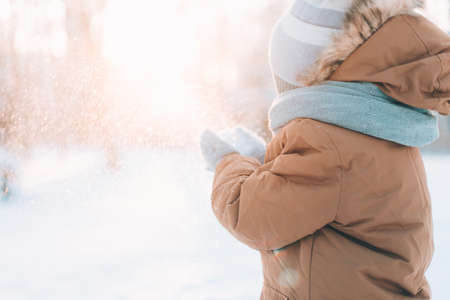Understanding Babywearing and Seasonal Considerations
Babywearing is a wonderful way for parents to bond with their little ones while keeping their hands free. It’s popular among American families for its convenience—whether you’re strolling through the park, shopping at the farmers’ market, or just getting things done around the house. But did you know that the weather can make a big difference in how comfortable and safe babywearing can be?
Why Weather Matters When Choosing a Baby Carrier
The materials and design of your baby carrier impact how much heat or airflow both you and your baby experience. When it’s hot outside, overheating becomes a real concern; when it’s cold, you’ll need to keep your baby warm without causing overheating. Paying attention to these seasonal details helps protect your child from discomfort or even health risks like heat rash or chill.
Safety and Comfort Tips for Every Season
| Season | Main Concern | What to Look For in a Carrier | Extra Safety Tips |
|---|---|---|---|
| Summer/Hot Weather | Overheating & Sweat | Lightweight, breathable fabrics (like cotton mesh), minimal layers, sun protection features | Dress baby lightly, use hats, stay in shade, check for sweaty skin often |
| Winter/Cold Weather | Staying Warm but Not Overheating | Padded straps, thicker fabrics, coverage for legs and arms, room to layer clothes underneath | Avoid bulky snowsuits (can be unsafe in carriers), layer up, cover exposed skin with blankets or carrier covers as needed |
| Spring/Fall | Changing Temperatures | Adjustable carriers with removable panels or hoods, midweight fabrics | Dress in layers, bring extra cover-ups just in case weather changes suddenly |
Quick Checklist: What Impacts Babywearing Comfort?
- Fabric: Is it breathable or insulating?
- Carrier Style: Does it allow airflow? Can you adjust for more coverage?
- Your Activity: Will you be moving a lot or staying still outdoors?
- Your Baby’s Age: Newborns need more warmth and head support than older babies.
- Layering Options: Can you easily add or remove layers based on temperature?
The right choice of carrier and clothing can make all the difference for both parent and baby throughout the year. Understanding these basics will help you confidently choose what works best as the seasons change.
2. Best Carriers for Hot Weather
When the temperatures rise, keeping both you and your baby comfortable is key. Choosing the right baby carrier for hot weather can make all the difference during summer outings, walks in the park, or travel to warm climates. Let’s explore the best breathable and lightweight options, plus a few practical tips to help everyone stay cool.
Top Features to Look For
- Breathable fabrics: Mesh, cotton, or linen materials allow airflow and help wick away sweat.
- Lightweight design: Less bulky carriers prevent overheating and are easier to pack for travel.
- Minimal layers: Look for carriers with fewer thick panels and padding.
Popular Carrier Types for Hot Weather
| Carrier Type | Main Material | Why It Works Well |
|---|---|---|
| Mesh Structured Carrier (e.g., Ergobaby Omni Breeze) | Mesh Polyester Blend | Excellent airflow, supportive structure, and adjustable features for parents and babies of different sizes. |
| Linen Ring Sling (e.g., Sakura Bloom) | Linen | Naturally breathable, dries quickly when damp, easy to adjust on the go. |
| Cotton Wrap (e.g., Moby Evolution Wrap) | Cotton/Modal Blend | Soft and stretchy, less heat retention compared to traditional wraps. |
| Hybrid Carrier (e.g., Baby K’tan Breeze) | Cotton/Mesh Combo | No buckles or rings, half-mesh design allows great ventilation and comfort. |
Tips for Keeping Cool While Babywearing
- Dress lightly: Both you and your baby should wear thin, light-colored clothing.
- Avoid direct sun: Use hats with brims or choose shaded paths whenever possible.
- Stay hydrated: Bring water for yourself and plan regular breaks to keep everyone cool.
- Add a cooling towel: Place a damp muslin cloth between you and your baby’s back if needed.
- Check baby often: Make sure your baby isn’t too hot by feeling their neck or back; if they’re sweaty or flushed, take a break.
Pro Tip: Try Before You Buy!
If possible, visit a local baby boutique where you can try different carrier styles. Finding the perfect fit helps ensure comfort during those sunny adventures with your little one.

3. Best Carriers for Cold Weather
When the temperature drops, keeping your baby warm and cozy while babywearing is a top priority. Choosing the right carrier and using smart layering techniques can make winter outings safe and comfortable for both you and your little one.
Top Cold Weather Carrier Options
| Carrier Type | Why It’s Great for Winter | Recommended Brands |
|---|---|---|
| Soft Structured Carrier (SSC) | Padded straps and structured design help block wind and hold in heat | Ergobaby, Tula, LILLEbaby |
| Mei Tai Carrier | Multiple fabric layers provide warmth; easy to adjust over winter coats | Boba, Infantino |
| Wraps (Woven or Stretchy) | Thick wraps offer excellent insulation; fully customizable fit for extra bundling | Moby, Solly Baby, Didymos |
| Buckle Carriers with Winter Covers | Add-on covers provide wind and water resistance without overheating indoors | Beco Gemini with universal cover, Ergobaby Weather Cover |
Layering Strategies for Chilly Days
- Dress Your Baby in Layers: Use breathable base layers like cotton bodysuits, add a warm fleece or wool layer, and finish with a hat and booties. Avoid thick snowsuits, which can cause overheating or affect carrier safety.
- Wear Your Own Outer Layer Over the Carrier: Choose a roomy zip-up coat or a dedicated babywearing jacket that fits around both you and your baby. This helps trap shared body heat.
- Covers and Blankets: Use specially designed carrier covers or a warm blanket tucked around the outside of the carrier for extra protection against wind and snow.
- Keep Extremities Covered: Baby’s head, hands, and feet lose heat quickly—use snug hats, mittens, and booties that won’t fall off while walking.
Winter Gear Compatible with Carriers
Look for products specifically made for babywearing in cold weather, such as:
- Babywearing Jackets: These come with panels or inserts to accommodate your baby in a front or back carry.
- Carrier Covers: Water-resistant and insulated covers attach directly to most carriers for quick protection when heading outside.
- Knit Hats & Booties: Soft, stretchy options stay put without causing discomfort inside the carrier.
Pro Tips:
- Avoid overdressing your baby—your body heat will keep them warmer than you think!
- If you’ll be going indoors often, dress your baby so you can easily remove outer layers without taking them out of the carrier.
- Always check your baby’s temperature by feeling their neck or back—not their hands or feet—to make sure they’re not too hot or cold.
4. Seasonal Babywearing Safety Tips
Preventing Overheating in Summer
When the temperatures rise, it’s important to keep your baby cool and comfortable while babywearing. Choose a lightweight, breathable carrier made from fabrics like cotton or mesh. Dress your baby in minimal clothing—think a onesie or just a diaper if you’re indoors. Check your baby often for signs of overheating, such as flushed cheeks, damp hair, or fussiness. Take breaks in shaded areas and always stay hydrated.
| Summer Safety Tips | Why It Matters |
|---|---|
| Use lightweight carriers | Allows better airflow and prevents overheating |
| Dress baby lightly | Avoids excess heat buildup |
| Stay out of direct sun | Reduces risk of sunburn and heat exhaustion |
| Check baby’s temperature frequently | Helps spot overheating early |
Sun Protection for Your Little One
Babies have sensitive skin that can burn easily. Use a wide-brimmed hat and dress your baby in light, long-sleeved clothing if possible. Consider using a carrier with a built-in sunshade or drape a muslin cloth loosely over the carrier for extra protection (but make sure air can still circulate). Avoid sunscreen on babies under six months; for older babies, use a mineral-based sunscreen on exposed areas.
Staying Dry When It Rains
If you get caught in the rain while wearing your baby, a weather-resistant cover or poncho designed for babywearing can be a lifesaver. Make sure your baby’s face stays uncovered so they can breathe freely. Always check that both you and your baby are warm enough after getting wet, as little ones can get cold quickly.
Quick Guide: Rainy Day Babywearing Essentials
| Item | Purpose |
|---|---|
| Waterproof carrier cover/poncho | Keeps you and baby dry |
| Extra set of clothes for baby | Change if your baby gets wet |
| Towel or absorbent cloths | Dry off as needed during outings |
Protecting Your Baby from the Cold in Winter
Layering is key when babywearing in cold weather. Dress your baby in one more layer than what you would wear yourself. Use a carrier-friendly coat or cover that fits over both of you to trap warmth without squishing your baby. Remember hats, mittens, and booties since little extremities get cold fast! Check your babys hands, feet, and nose often to make sure they aren’t getting too chilly.
Winter Babywearing Checklist:
- Soft, warm layers (avoid bulky snowsuits inside the carrier)
- Carrier cover or oversized winter coat for both of you
- Cotton or wool hats, mittens, and booties for your baby
- Frequent checks for warmth and comfort
- Avoid slippery surfaces when walking outdoors
No matter the season, always keep an eye on your babys comfort and safety while enjoying the closeness that babywearing brings!
5. American Lifestyle Insights and Recommendations
Cultural Tips for Using Baby Carriers Across Seasons
American families often lead busy lives filled with outdoor adventures, city commutes, and social gatherings. Choosing the right baby carrier that fits different weather conditions and lifestyle needs can make parenting much easier and more enjoyable. Here are some practical tips and recommendations tailored to American parents:
Outdoor Activities: Parks, Hikes, and Neighborhood Walks
Many American families love spending time outdoors, especially in spring and summer. Opt for lightweight, breathable carriers like mesh or linen wraps for warm days. In colder months, structured soft-structured carriers (SSCs) paired with weather covers or wearing your coat over both you and your baby can help keep everyone cozy.
| Season | Recommended Carrier Material | Practical Tip |
|---|---|---|
| Summer | Mesh/Linen Wraps, Lightweight SSCs | Choose UV-protective hats for baby; stay hydrated during outings. |
| Winter | Padded SSCs, Fleece-Lined Carriers | Add a carrier cover or babywearing jacket for warmth. |
| Spring/Fall | Cotton Wraps/SSCs | Layer clothing for easy adjustment to changing temps. |
Urban Commuting: Subways, Buses, and City Living
If you live in a city or frequently use public transportation, hands-free mobility is key. Front carriers or hip seats work well for crowded spaces. Look for carriers that are easy to put on and take off quickly—especially important when boarding buses or trains with your baby.
- Hot Weather: Go for compact, airy slings or buckle carriers made of moisture-wicking fabrics.
- Cold Weather: Consider adjustable SSCs that fit over jackets; look for features like windproof panels.
Lifestyle-Friendly Choices for Different Family Needs
The best carrier often depends on your family’s daily routine and preferences:
| Lifestyle Type | Carrier Suggestion | Why It Works |
|---|---|---|
| Active Outdoorsy Families | Ergonomic Hiking Carriers with Sunshade/Rain Cover | Extra support for long walks; built-in weather protection. |
| City Dwellers/Commuters | Slim SSCs or Ring Slings | Easy to store and quick to wear in tight spaces. |
| Multi-Child Households | Toddler Carriers + Compact Newborn Wraps | Cater to children of different ages without bulky gear. |
| Frequent Travelers | Pocketable Sling or Foldable SSCs | Packs easily into diaper bags or carry-ons. |
Quick Tips for American Parents:
- Dress Your Baby Appropriately: Always consider the weather when dressing your baby before using a carrier—layer up in winter, go light in summer.
- Sun Protection: Hats, sunscreen (for babies older than 6 months), and shaded carriers are essentials during sunny months.
- Stay Hydrated: Bring water bottles along, especially on hot days while babywearing outdoors.
- Carrying Position Matters: For long periods, alternate between front and back carries to prevent fatigue.
- Test Before You Buy: Many stores offer try-on options—take advantage of these to find the perfect fit for your body type and lifestyle!


